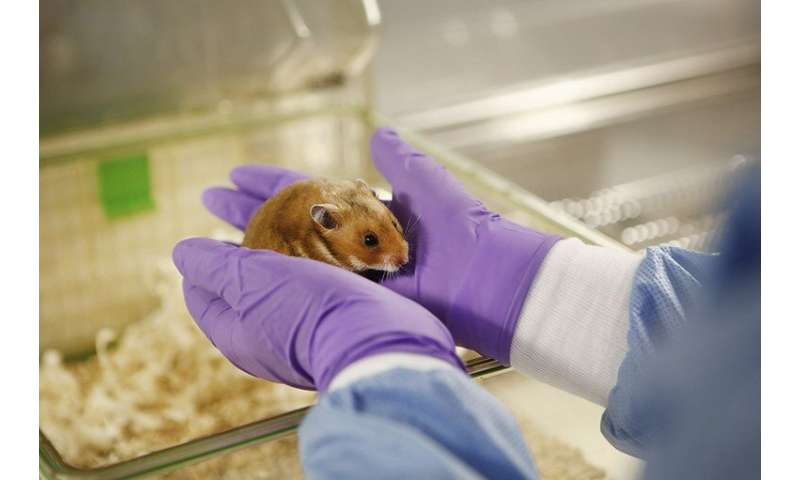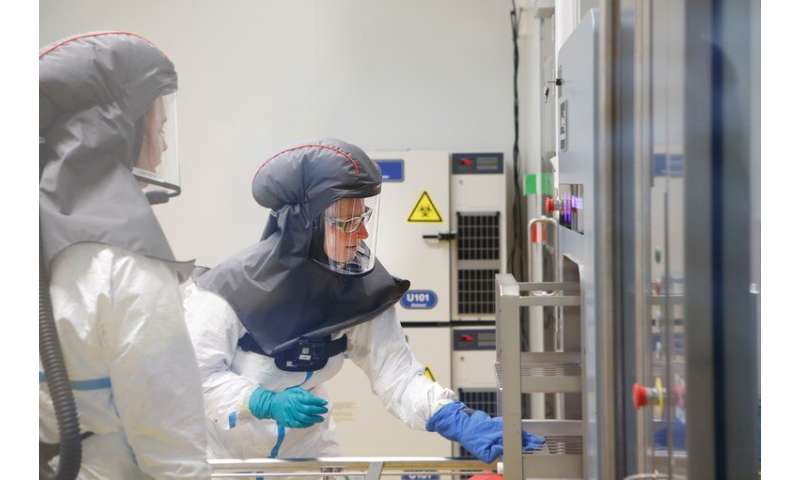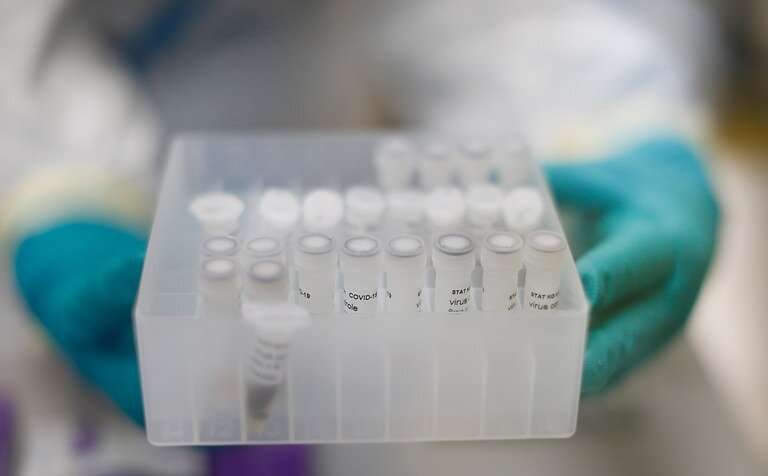Virologists select SARS-CoV-2 vaccine candidate for clinical trials

Virologists at the Rega Institute at KU Leuven (Belgium) have developed a vaccine candidate that protects hamsters from infection with the SARS-CoV-2 coronavirus. Theirs is one of the first vaccine candidates that is proven to protect lab animals from infection. The team aims to start clinical trials next Winter. Their findings are pending peer review, but the researchers have already submitted their results to preprint server bioRxiv.
The team, which is led by Professor Johan Neyts and Kai Dallmeier, Ph.D., started developing eight prototypes of their vaccine against the new coronavirus in January. Lab experiments have now shown that one of these vaccine candidates is highly effective in hamsters. Hamsters who received the vaccine had few to no traces of the virus in their lungs after exposure.
To study the efficacy of the vaccine candidates in-depth, the virologists first developed a hamster model. When hamsters receive the SARS-CoV-2 virus through their nose, they develop a lung infection that is similar to COVID-19.
Healthy hamsters were first vaccinated and exposed to the virus a couple of weeks later. Control groups each received one of two alternatives: the yellow fever vaccine, or a placebo.
“In the hamsters that received the vaccine candidate, we found up to half a million times less virus particles than in the control groups. These animals also didn’t develop any lung infections. The lungs of their counterparts in the control groups, by contrast, showed clear signs of infection and disease,” Neyts explains. A single dose of the vaccine candidate proved sufficient to prevent infection. Moreover, several animals were already protected within ten days after vaccination.
The vaccine candidate is based on the existing vaccine against yellow fever and may thus protect lab animals against both COVID-19 and yellow fever. The researchers inserted parts of the genetic code of the SARS-CoV-2 virus into the yellow fever vaccine. In the past, the KU Leuven team already used the same approach to develop vaccine candidates against Ebola, Zika, and rabies.
“The effectiveness of the yellow fever vaccine is well-established,” Neyts continues. “The vaccine has been in use for about eighty years, and close to 800 million people have already received it. One dose of the vaccine offers lifelong protection against yellow fever. More than 160 vaccines against COVID-19 are currently in development, but ours is the only one that is based on the yellow fever vaccine.”

Club-shaped spikes
The prototypes use the genetic code of the hallmark club-shaped spikes on the surface of the coronavirus. The virus uses these spikes to attach itself to the cell, after which the genetic material of the virus enters the cell. As a result, the coronavirus can multiply in the cells of our respiratory system. The vaccine candidate triggers an immune reaction in the body which starts producing antibodies that target the spikes. As a result, the virus can no longer attach itself to its target cells and can thus no longer spread.
“To select the most effective prototype out of eight candidates, we not only tested which prototype triggered the largest production of antibodies in the hamsters, but also whether the candidates offered proper protection against the virus. This increased our chances of finding a successful candidate,” says Professor Neyts. “Only by using an infection model, you can find out whether one or more doses are necessary, and how soon after vaccination there is sufficient efficacy.”
The vaccine candidate triggers an immune reaction in the body which starts producing antibodies that target the spikes on the surface of the coronavirus. Layla Aerts—KU Leuven From lab tests to clinical trials
“We started working on our prototypes soon after 12 January, when Chinese researchers shared the genetic code of the SARS-CoV-2 virus online,” Professor Neyts explains. “We are pleased with our results, even though there is still a long way to go. An experimental vaccine from a research lab cannot simply be used on human beings. That is why a specialized and accredited company will now have to produce the vaccine candidate. This will be done according to the highest quality standards.” Negotiations with potential partners are still ongoing.
“If everything keeps going according to plan, we want to start the first clinical trials with human subjects by the end of this year,” says Kai Dallmeier, who leads the vaccine development team at KU Leuven. “It generally takes at least ten years to develop a vaccine, so our working speed has been exceptionally high. And we’re not alone: worldwide, many vaccines are in development. That is a good thing because, in this stage. It’s important not to put all our eggs in one basket. Most of the other vaccine candidates can be grouped into a limited number of categories. So when one candidate in a particular category fails, the others in that category may fail too.”

Virus inhibitors
Neyts adds, “Mind you: vaccines only offer protection when people are vaccinated well before they are exposed to the virus. Vaccines are not a solution for people who are already ill. That is why we are also looking for a cure to help COVID-19 patients. We’re currently analyzing thousands of compounds of existing medicines to find out whether some may already be useful to slow down the virus in COVID-19 patients.”
Source: Read Full Article


